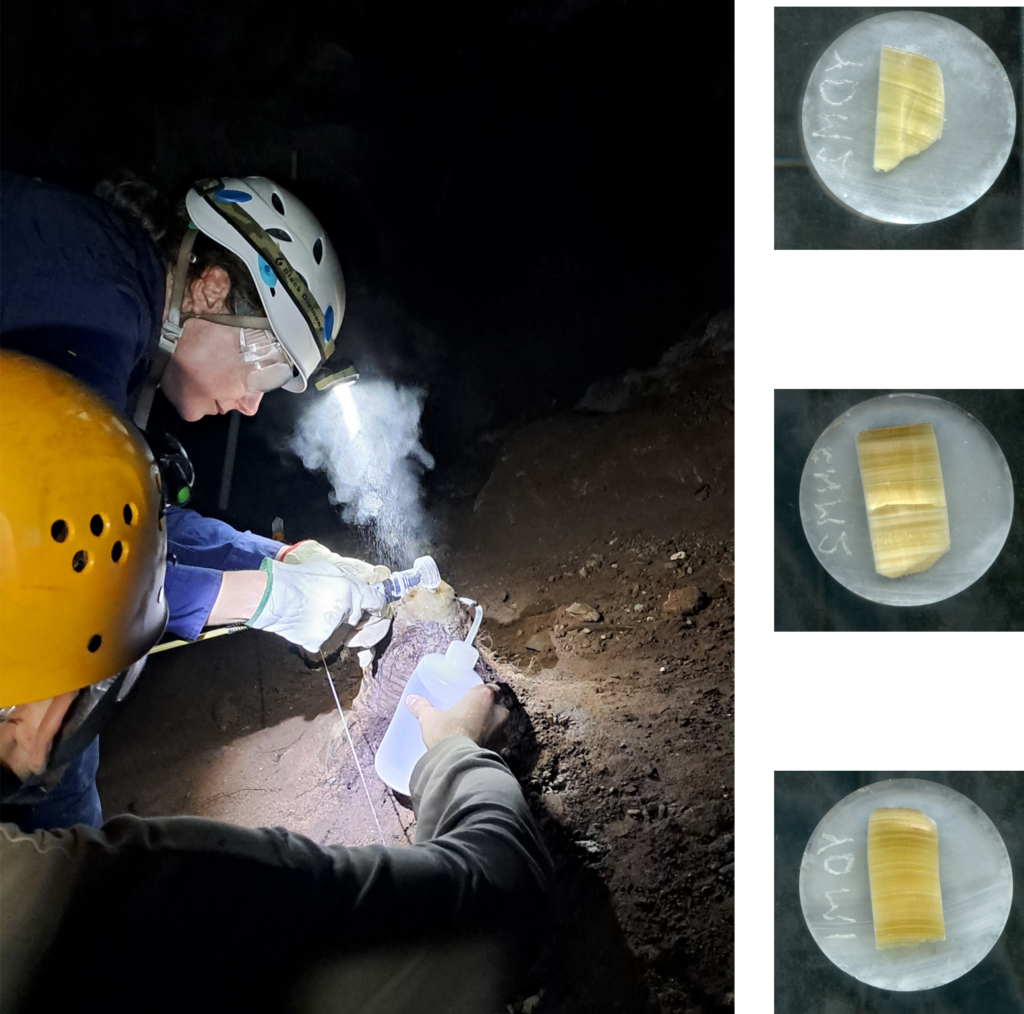By Georgia Barrington-Smith & Dr Rebecca Duncan
Anthropogenic-driven climate change has extended the duration of Australia’s annual fire seasons, wreaking havoc on agricultural crops, wildlife, and homes. The 2019-2020 bushfires, which scorched over seventeen million hectares and claimed the lives of over one billion animals, provide a stark example of this growing crisis.
Satellite observations can offer insights into past fire regimes, but such records are not extensive enough to capture the entire range of natural variability, or the feedback between climate, landcover, and human activities. Given that climate models forecast even more intense bushfire seasons in the future, it is critical that research continues to analyse historical data to track these changes. UNSW researcher Dr. Micheline Campbell, in collaboration with ANSTO, has examined the history of Australian bushfires etched in cave deposits (speleothems) to help strengthen our fire management strategies in the future.
The hidden history buried in speleothem caves
Speleothem caves contain stalagmites and stalactites – mineral formations created by groundwater that drips onto the cave floor. These mineral formations can be isotopically dated to determine past climatic conditions, including past bushfires.
Over thousands of years, as bushfires burned above, ash deposited over caves were embedded into speleothems by rainwater, preserving trace element layers of the ash. This process creates ‘paleofire signals’ that act as a chronological record of the environment above the cave, capturing yearly variations over millennia. Research by Dr. Micheline Campbell and her collaborators aims to reconstruct not just the timing, but also the severity of ancient fires by analysing these trace elements preserved in the speleothem archives.
Micheline’s historical hunt for fire information
Micheline and her colleagues began by collecting ash samples from recent bushfires in south-west and south-east Australia. At ANSTO’s Environment Research & Technology (ERT) laboratory, Micheline then performed uranium-series dating techniques on these samples to count their annual growth bands. By analysing this data, she showed that variations in ash metal concentrations were related to the burn severity of the associated bushfires.
Next, Micheline set out to determine whether the severity of burns indicated by ash data was similarly recorded in speleothems. To do this, she collected ‘mini cores’ from the actively-growing tips of stalagmites across different caves in Yanchep National Park, Western Australia – an area that has experienced a variety of bushfires to varying degrees.
Using the X-ray fluorescence microscopy beamline at ANSTO’s Australian Synchrotron, and laser ablation inductively-coupled plasma mass spectrometry at ANSTO’s ERT lab, the team created elemental maps of the samples. Their preliminary results revealed distinctive metal patterns derived from the ash following known fires.
By examining the ash composition and comparing it to stalagmites from areas with recorded fire events, Micheline and her collaborators discovered that the speleothems from Yanchep National Park in south-western Western Australia are likely to offer the sought-after high-resolution records of fire severity and frequency from our deep past.

Historical insights guiding future decisions
Micheline’s research underscores the importance of analysing historical records to enhance our understanding of future environmental changes. The paleo-information archived in speleothem caves can provide significant insights for improving land management strategies, thereby enabling more informed decision-making in response to climate change.
This work is part of an Australian Research Council Discovery Project led by Prof. Andy Baker (UNSW), Dr. Pauline Treble (ANSTO), and Dr. Liza McDonough (ANSTO). It builds on previous studies conducted by ANSTO Environmental Scientist Dr. Liza McDonough, who identified the possibility of reconstructing fire events from stalagmites.
AINSE are proud to spotlight Micheline for her fantastic work!
If you, just like Micheline, are keen to discover the answers to some of Australia’s toughest environmental challenges, visit ainse.edu.au/scholarships to see how AINSE can support you.
To read more research spotlights visit ainse.edu.au/research-spotlights. Additionally, keep an eye out for the second article in our April Awareness issue, where we will showcase the work of Sarah Cooley, an AINSE PGRA scholar, who is using historical records of fire-sensitive Pencil Pine to study the bushfire resilience of Australia.
Follow ainse_ltd on Instagram, Facebook, Threads and LinkedIn to keep up to date with upcoming events and research spotlights.
